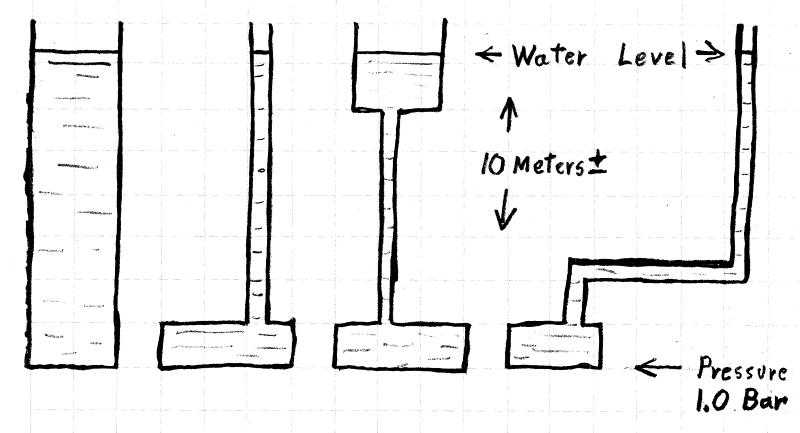Hi,
I have a 12(W)x18(L)x1m concrete tank installed underground and it will be subjected to pressure of 0.5bar.
To test the tank for leaks, instead of pressurizing the tank using pumps or air blower, my supplier suggests we use a 1 inch hose with 1 end connected to the top of the tank (completely filled with water), and connect the other end to an elevated IBC 10m above the top of the tank.
He claims that this way the tank will be subjected to pressure of >0.5bar and <1 bar.
What do you guys think? I mean it sounds logical because he is trying to create the pressure using hydrostatic pressure. But is this 10m water column in the small 1 inch hose able to provide the sufficient pressure to test the huge 12x18x1m tank? If the tank is completely filled with water, there will be no flow, and Bernoulli equation would dictate headloss=0 and the static pressure in the tank would be 10m?
Back then in school the examples given were otherwise. The tank providing the hydrostatic pressure would be huge, while the receiving end at the bottom are pipes. I can fully understand this part taught in school. But to put it the other way round with huge tank at the bottom and pipes providing the hydrostatic pressure, I cannot reconcile.
Am I missing something? Advice please? Thank you so much.
I have a 12(W)x18(L)x1m concrete tank installed underground and it will be subjected to pressure of 0.5bar.
To test the tank for leaks, instead of pressurizing the tank using pumps or air blower, my supplier suggests we use a 1 inch hose with 1 end connected to the top of the tank (completely filled with water), and connect the other end to an elevated IBC 10m above the top of the tank.
He claims that this way the tank will be subjected to pressure of >0.5bar and <1 bar.
What do you guys think? I mean it sounds logical because he is trying to create the pressure using hydrostatic pressure. But is this 10m water column in the small 1 inch hose able to provide the sufficient pressure to test the huge 12x18x1m tank? If the tank is completely filled with water, there will be no flow, and Bernoulli equation would dictate headloss=0 and the static pressure in the tank would be 10m?
Back then in school the examples given were otherwise. The tank providing the hydrostatic pressure would be huge, while the receiving end at the bottom are pipes. I can fully understand this part taught in school. But to put it the other way round with huge tank at the bottom and pipes providing the hydrostatic pressure, I cannot reconcile.
Am I missing something? Advice please? Thank you so much.


![[idea] [idea] [idea]](/data/assets/smilies/idea.gif)
![[r2d2] [r2d2] [r2d2]](/data/assets/smilies/r2d2.gif)